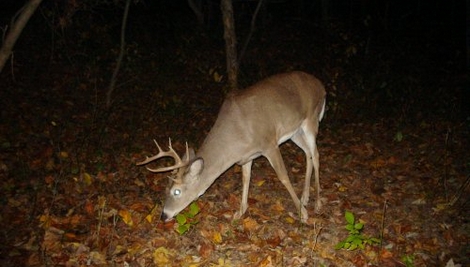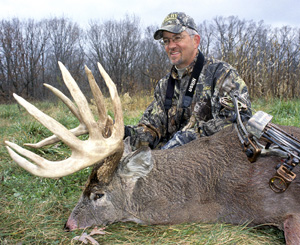Hunting Buck Scrapes
You’ve been lucky enough to find a buck scrape. Now, is it active? One method to identify an active scrape is to cover it with leaves and later re-check it a day or few later. This is the most basic approach in finding out whether a white-tailed buck is still in the area and visiting his scrapes.

If you find the scrape has been freshened upon returning you are probably going to want to set up to determine the quality of the buck working the scrape. However, it’s not uncommon for a smaller, or larger, bucks to stop by and leave their own scent-stamp directly over another buck’s scrape.

Hunting a Scrape
In this case, you already know a buck is working the scrape, but is he what you want to harvest? You now have two options. First, you could set up downwind of the scrape, as most bucks wont approach directly and prefer to use the wind to check their scrape, and see what stops by.
Or, you can use a game or trail camera set near the scrape to get photos of all the deer moving through the area. If you see a big, mature buck on your photos, then it’s time to move in as quickly as possible and make all of your work pay off!

I have found several scrapes in different locations on my land. Are they all different bucks?
Brian, whitetail bucks can make several scrapes so it could be only a single buck, particularly if your property is small. Regardless, it is probably at least two or more deer. You can monitor the scrapes using game cameras, but a scrape is regularly visited by many deer, both does and bucks, even those that did not create the scrape.
If a coyote is around a buck scrape will the deer not return to it? My game camera photos suggest that once a coyote has been to a scrape the deer stop returning. Just wondering if this is a factor?
Gail, not something you hear much about, but I would imagine that a scrape can work as a calling card for deer as well as a spot for a coyote to set up an ambush on an deer. My guess would be if a coyote is working a scent heavily it’s going to leave a lot of scent and that means deer will shy away. Game cameras are a great way to document events in the field!